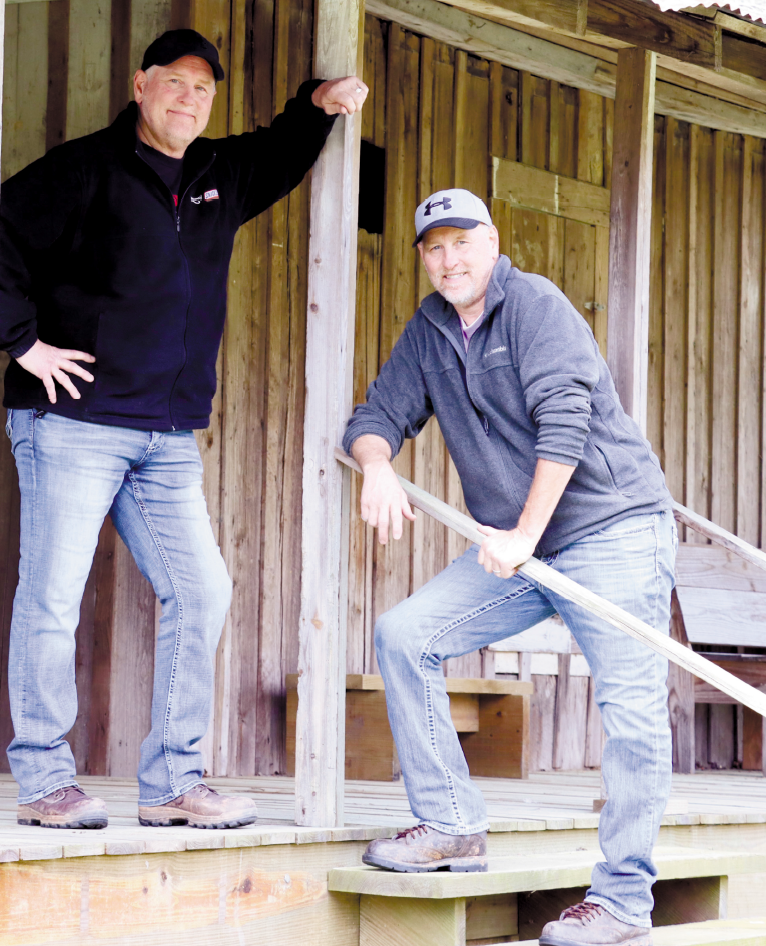
Brothers Mark and Mike Mangham share local history through images.
When two brothers, born three minutes apart, age out of competitive sports competition and still enjoy spending time with each other evenings and weekends, what do they do?
 Mike and Mark Mangham spend hours in the archives out at LSU in Shreveport digging through some of the 2.5 million negatives stored in the Northwest Louisiana Archives.
Mike and Mark Mangham spend hours in the archives out at LSU in Shreveport digging through some of the 2.5 million negatives stored in the Northwest Louisiana Archives.
They are self-described as “just two nerdy, ex-athlete, twin brothers that grew up in Southern Hills and who one day not only discovered a love for local history but also ways to have fun while bringing that history to life.”
According to Mike, “We’ve been doing it for about six or seven years now. It started off with us just posting a few old pictures online, and people started loving them. And then Mark said, ‘We need to go the same place and post a side-byside picture of what it looks like now.’ I didn’t think that was a good idea, but we did anyway, and people said, oh, that’s good to see what it looks like now.”
The old photo posts caught on, and, as with most great discoveries, an accident changed history.
“One day I was working on my computer,” Mike said, “and I overlaid both of the images. I was like, oh, my gosh, it blended them together. That’s when it started popping. That’s when we started blending pictures to show people what it would look like if it was still there.”
When the two posted them on the Internet, the response was very positive.
“When we first started doing it,” Mark said, “we didn’t know if anybody would be interested. We were going to do it anyway because we really enjoyed it.”
“People absolutely loved it,” Mike chimed in. “It’s something that just exploded.
We made our videos on YouTube; Facebook has over one million views. A lot of our videos have over 20,000 views. Some of them have got 60 and 70.”
A response breakdown from Facebook indicates their viewers are from all over the country, mostly in this area, but stretching even as far away as the United Kingdom, Australia and New Zealand.
Mark described their followers as very eclectic. “They’re from all over the country. They either grew up here and moved off, or a family member that’s a follower shared it, and they want to join [the Facebook group].”
“We’ll have people message us all the time and say, ‘You don’t know, but I’m crying right now, looking at these pictures,’” Mike said. “‘That’s my grandfather and my father in the picture. I never saw that picture before.’ And to us, that’s what makes it all worthwhile.”
The boys spend a lot of time at LSU-S, and they give a lot of credit to the staff of the Northwest Louisiana Archives for their assistance and patience. Laura McLemore, Domenica Carriere and Fermand Garlington II have been invaluable in the twins’ search for photographic gold.
“We research so many old photos,” Mike said. “When we go [to the archives], we take a picture of anything we think is interesting as we’re pulling out these negatives.
“A lot of times people will come up to the archives looking for something, and the [archivists] will have them contact us because we can tell them where to find it, because we document so much of the old photos.
“We take a negative, and we turn it into a black-and-white. Now we’ve even started colorizing them.”
Mark added, “When we look at negatives, we look for things like drive-ins, pictures downtown, pictures taken that were old. There’s a lot of negatives there. A lot of it you have to look through and determine whether it’s newsworthy, interesting or just something of historical significance.”
The negatives come from the collections of several local photographers, like Langston MacEachern, J. Frank McAneny and Jack Barham, to name only a few. The twins are passionate about making sure those photographers and their work are not overlooked.
“These pictures would have been forgotten forever,” Mike insists. “Like in the Shreveport Times Collection, they were run in the paper one time, like in 1952. One time. If people didn’t see it, they didn’t see it.”
And Mark added, “A lot of times, a photographer would go out and take a bunch of different pictures of an event, and he would only [print] one. Well, nobody would ever see those other pictures, but we’re finding those other pictures and posting [them]. And people can see their relatives and sometimes themselves in one of them.”
The boys say they’re not through with this hobby yet. “We’ve got so many photos backed up. We try to post something once a day. I tell everybody that we can make 10 posts a day for the next 20 or 30 years and still not get everything that we have. We’ll keep posting them every day until we die.”
And people from Coushatta to Nigeria will be able to see what happens when twin brothers have time and negatives on their hands. Enjoy their journey on the following pages.
"Barney" Blend

Mike and Shoni Mangham today walking alongside a 1955 downtown Shreveport crowd. The man in the photo resembles Barney Fife. The image was on the front cover of the Best of Times Magazine and won several awards at the North American Mature Publishers Association convention banquet.
Ford Park
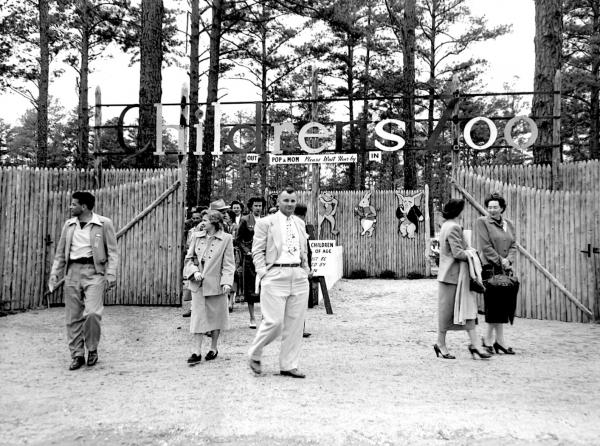

Old lady that lived in a shoe photo and the entrance to the Children's Zoo.
KoKoMo Drive-In
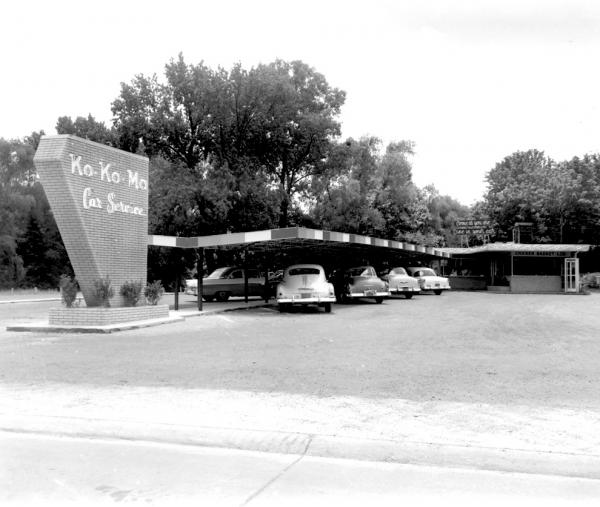

on Kings Highway then and also blended with today.
1927 Mardi Gras float in downtown Shreveport

Did you know that the first Mardi Gras celebration in Shreveport took place in 1874? According to Joel Rodgers, 1899 saw the largest early Mardi Gras celebration. Floats were large and impressive and were built by individuals or merchants as advertising (such as Schlitz Beer and Victoria Lumber Co.). One carriage is said to have carried local madam Annie McCune and her “girls.”
The good times came to stop during World War I as Mardi Gras was suspended throughout Louisiana during that time.
The 1926 Mardi Gras celebration was the first held since the ceasing of festivities during World War I in 1917 and 1918.
John D. Ewing, editor and publisher of The Shreveport Times and King of Carnival in 1926, fearing that there would be no Mardi Gras in 1927, put up his own money to finance the event. The theme was “Ancient Mythology.”
Southern Maid Donuts
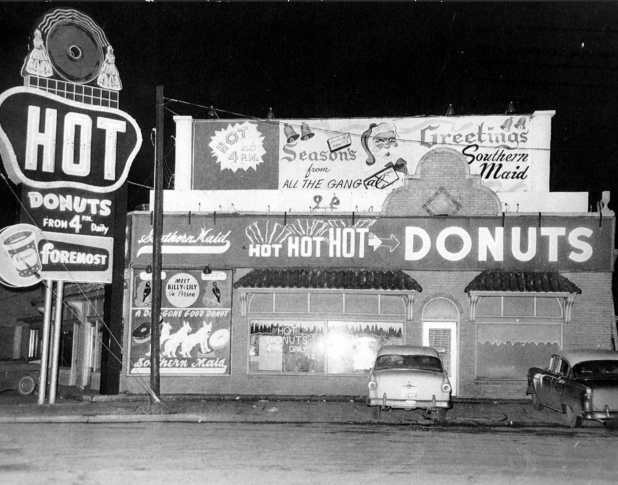
Corner of Greenwood Road and Hearne Avenue. People remember their two black mynah birds. This was a favorite hangout of Elvis Presley. The only commercial endorsement Elvis ever did was for Southern Maid Donuts.
Washington Youree Hotel
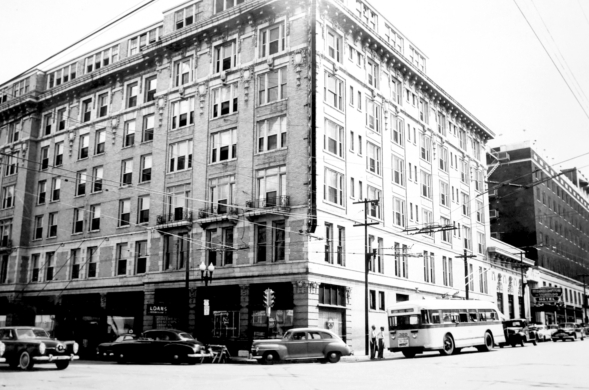
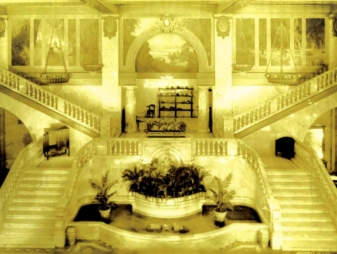
One of our favorite old buildings that used to be in downtown Shreveport was the Washington Youree Hotel (Hotel Youree merged with the Washington; later it was the Captain Shreve Hotel). At one time it covered three-fourths of the entire block. Just looking at the architecture of this incredible old building takes us back in time. These are just a few of the many photos we have uncovered of this once grand hotel that show what life was like back then.
Victory Natatorium


(Municipal Pool)
In 1919 Shreveport saw the construction of the Victory Natatorium. It was the largest salt water pool around and people from all over came to swim here. It was dedicated to the end of the Great War, hence the name Victory. Located where McNeill Street meets Fourth Street behind Hamilton Terrace School, the only thing that remains is its "footprint."
SPAR Stadium
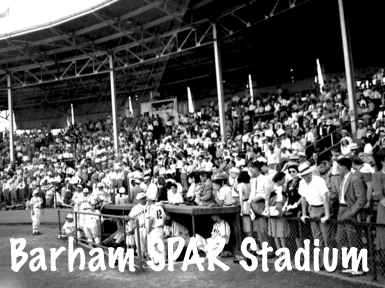
Opened in 1935, closed in 1985. Park grandstands were demolished, and the site is now used for community baseball. Known as Texas League Park 1938 - 1942, Gassers Park 1943 - 1946, Texas League Park 1946 - 1957, Bonneau Peters Field 1968, Braves Field 1968 - 1970 and SPAR Stadium 1971 - 1985.
The park is now known as Galilee Stewart-Belle Stadium.
Homer Peel
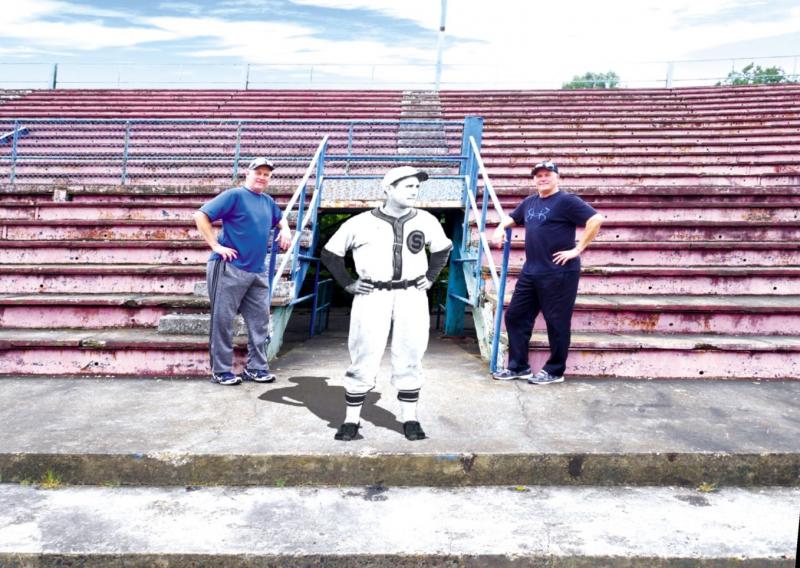
Mike Mangham, Homer Peel and Mark Mangham at SPAR Stadium. Homer Peel was known as the Ty Cobb of the Texas League. Homer lived up to his name. Peel was one of the top players in the Minor League during the 20s and 30s with a .325 lifetime batting average. Peel played in 186 Major League Baseball games for the St. Louis Cardinals, Philadelphia Phillies and New York Giants.
Elvis Presley
on stage at the Louisiana Hayride, Municipal Auditorium
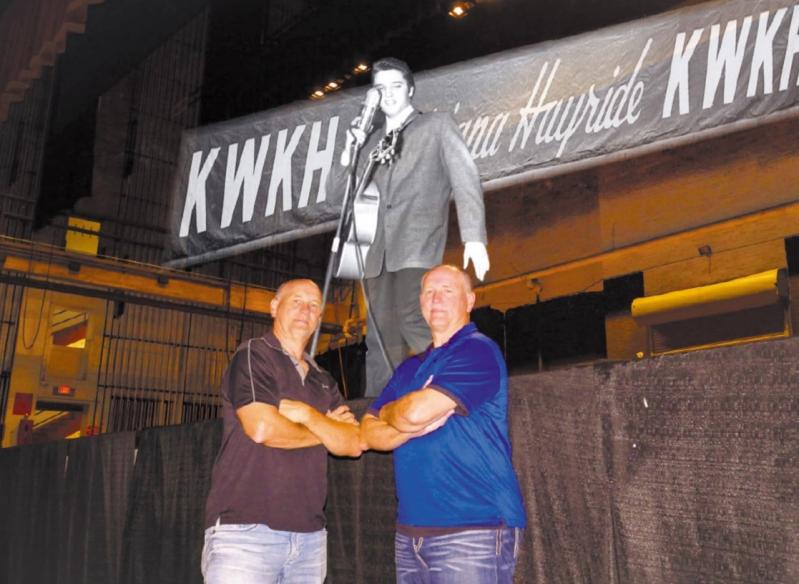
(Above) The blend we did with Elvis; Mike is on the left and Mark on the right. The Municipal Auditorium, located on Elvis Presley Boulevard in Shreveport was the home of the Louisiana Hayride from 1948-1960. With KWKH 1130 being the flagship station for the Hayride, it was ground zero for history-making musicians. World-famous photographer Jack Barham was there to capture these up-and-coming stars, two of them being Elvis Presley and James Burton. Even though the famous line “Elvis has left the building” was first spoken at the Hirsch Memorial Coliseum across town, Twin Blends would like to say, “Elvis is back in the building” at the Municipal!
1955 motorcycle policeman identified!
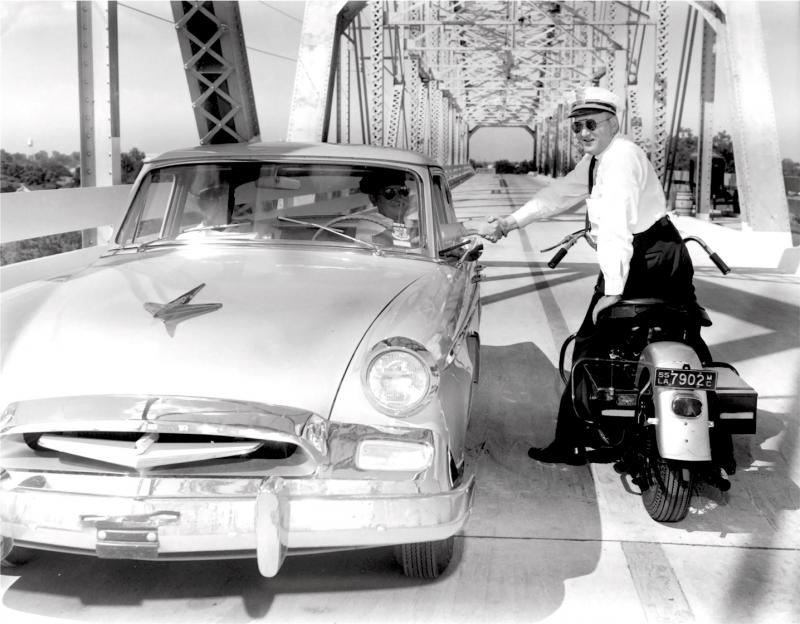
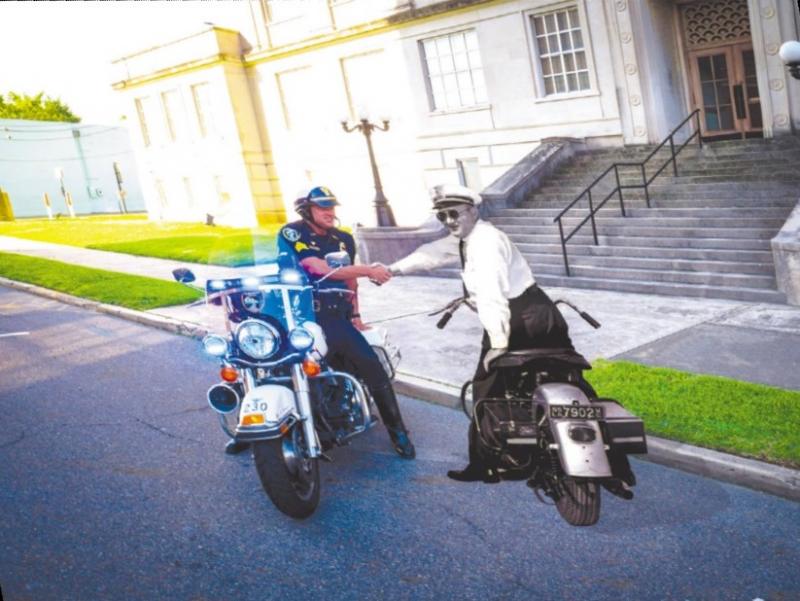
In our “Shreveport Police Heroes Then and Now" video, we blended a photo of Sergeant Michael Lasuzzo shaking hands with his 1955 counterpart. At the time, we didn't have a name for the "past" policeman, but now we do! His son, Robert Drake, contacted us recently after seeing the photo. We were excited to finally find out who this hero was.
R.L. "Bob" Drake Sr. began his career with the Shreveport Police Department sometime in 1936. In the photo, he was a captain in the traffic division of the SPD. He retired in 1962 as a major (assistant chief of traffic to Chief Harvey Teasley). He was working with the department when Jimmie Davis, later The Singing Governor, became public safety commissioner in 1938. His badge number was 208.
According to one story that Bob told his son, he was on duty one day in 1945, a Sunday, when billionaire Howard Hughes was taken to the Shreveport Police Department to prove his identity. Sundays (like today) at that time made downtown Shreveport look like a ghost town. Hughes was found sitting on a street curb drinking milk and eating crackers without any identification. The police assumed he was a vagrant and took him to the police station, where people were booked in, where Bob Drake was working that day. Hughes said he had landed his plane at the city airport and walked into town.
The local manager of the Hughes Tool Company was asked to come down and identify Hughes, whom he failed to identify. He had never met Hughes. The only person that identified him was his co-pilot later that day.
We love uncovering lost history, and this is a great example of what we do.
1923 Shreveport high school silver track medallion returned to family.
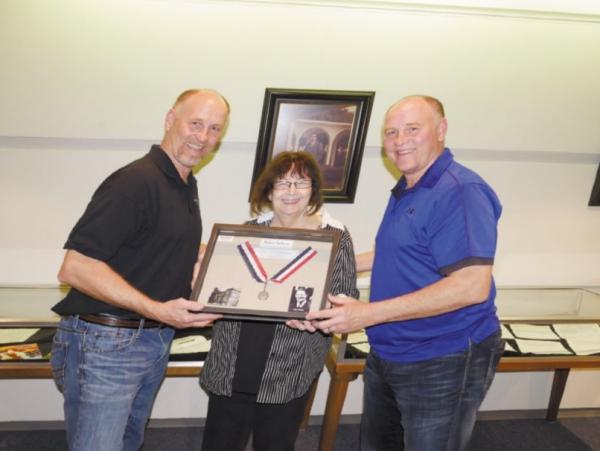
Mark found this medallion with the name Robert Sullivan 1923 S.H.S on it, while metal detecting and after two years of research, were able to track down Robert's relative (Flo Fowler) and present it to her.
Civil War relic hunting
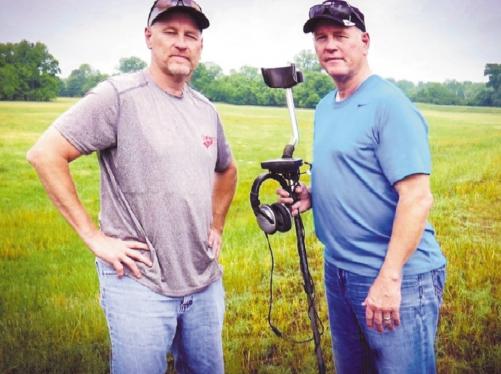
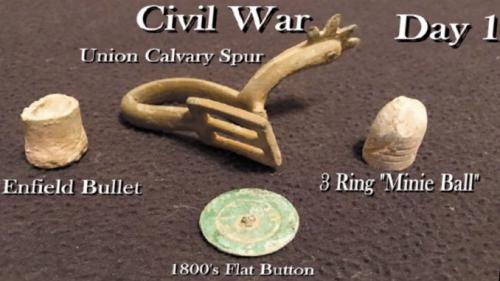
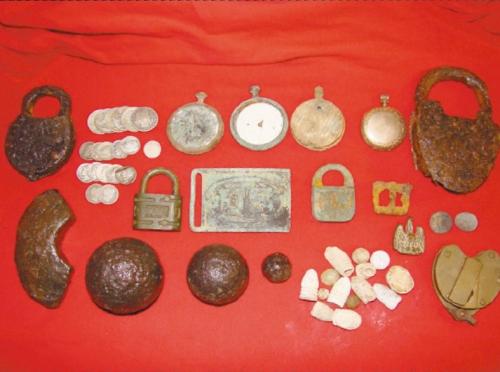
Relics found include cannonball fragments, grape shots, canistershots, 3-ring bullets, Union soldiers uniform buttons, half of a Union Cavalry soldier's spur, 1872 U.S. military buckle, padlocks (one is a steamboat strongbox padlock), pocket-watches and silver coins.
Union Station

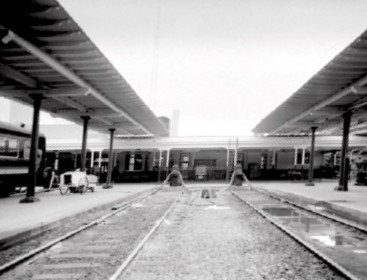
Built by the Kansas City, Shreveport & Gulf Terminal Company in 1897, it was located across the street from the Jefferson Hotel on Louisiana Avenue and at one point saw 35 passenger trains a day. It stayed open till Nov. 3, 1969. Two days later, it caught fire. The footprint of the old station can be seen running under the Common Street Overpass.
LSU Archives
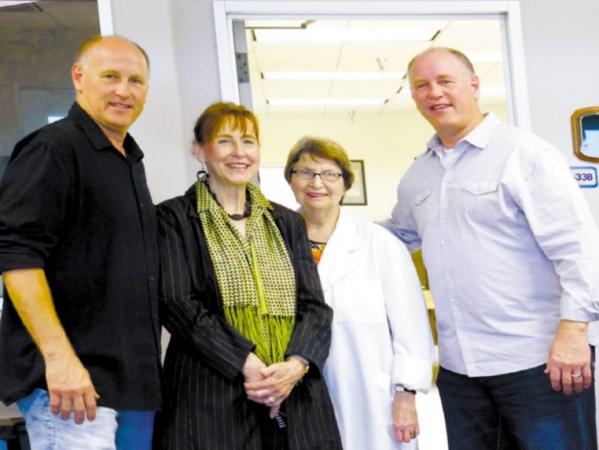
Mike, Laura McLemore, Domenica Carriere and Mark at the LSUS Archives.
Hamel’s Amusement Park
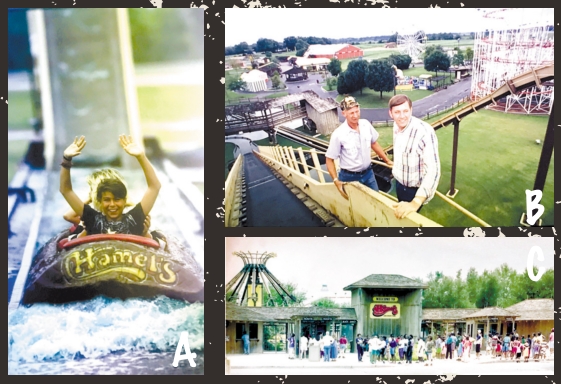
Hamel’s began as a dairy farm in the 1950s. Later, animals were added making it a nice-sized zoo. With added rides and attractions, it became the main attraction in the Shreveport-Bossier area for many years. It closed soon after 1999 and is now home to Riverpark Church.
A. Kids on the Log Ride making a splash.
B. Jerry Teutsch (park manager) and Milton Hamel on top of the log ride with park in the background.
C. Entrance to Hamel's Amusement Park.
TEAM MANGHAM
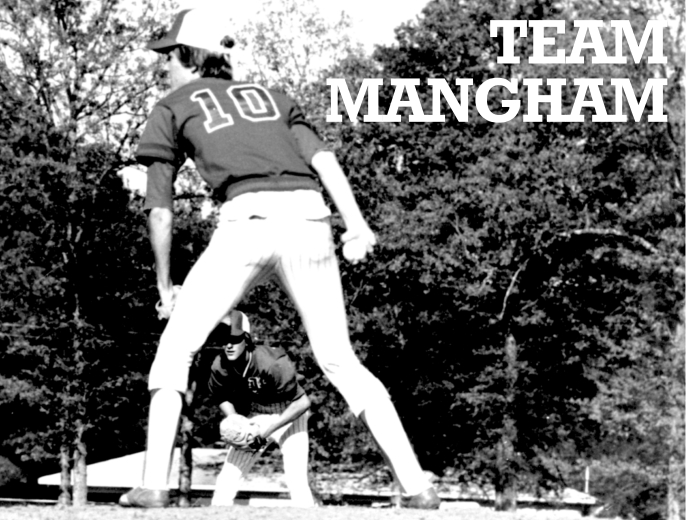
Besides
a love of old photos and computer manipulation, Mike and Mark Mangham
share a history of athletics that has lasted their lifetimes.
“We
grew up playing sports together,” Mike said. “We played basketball,
baseball. We both played Woodlawn High School baseball. We both played
Centenary baseball. Mark was one of the starting pitchers.”
 Mark
signed with the Houston Astros organization at a tryout camp as a
knuckleball pitcher. So, he got to share the bullpen with names like Joe
and Phil Niekro.
Mark
signed with the Houston Astros organization at a tryout camp as a
knuckleball pitcher. So, he got to share the bullpen with names like Joe
and Phil Niekro.
Mark
said, “After college some buddies and I went to a Houston Astros tryout
camp in Tyler. There were like 300 guys there working out. I was the
only person that was signed. I went to rookie ball. I played two years
with the Houston Astros organization.”
From
there, he said he came home to Shreveport and worked out with the
Shreveport Captains. A visit from the Arkansas Travelers resulted in
another tryout, and Mark was sent to the Florida State League, where he
played with the Astros again.
“I
got to play two years with the Cardinals organization. After four years
in ‘A’ ball, I figured that was enough. I just didn’t want to go back
to the same team and play with a bunch of young, new guys for the fifth
year. So, I figured it was time to hang it up.”
Mike
kept his sporting life close to home. “I played high school baseball,
and I played college. After college I didn’t do anything else. When I
turned 30, me and Mark both played Men’s Senior League Baseball. It was
great. Nobody could touch Mark because he had just come back from
playing pro ball. He was mowing people down. He threw his knuckle ball a
little bit, but they couldn’t hit his curve. We played a lot of years
together in Men’s Senior League Baseball.”
The
twin said they played sports together into their 40s before hanging up
their cleats and turning their attention to historic photos and building
an Internet presence that celebrates what once was and what it has
become.

